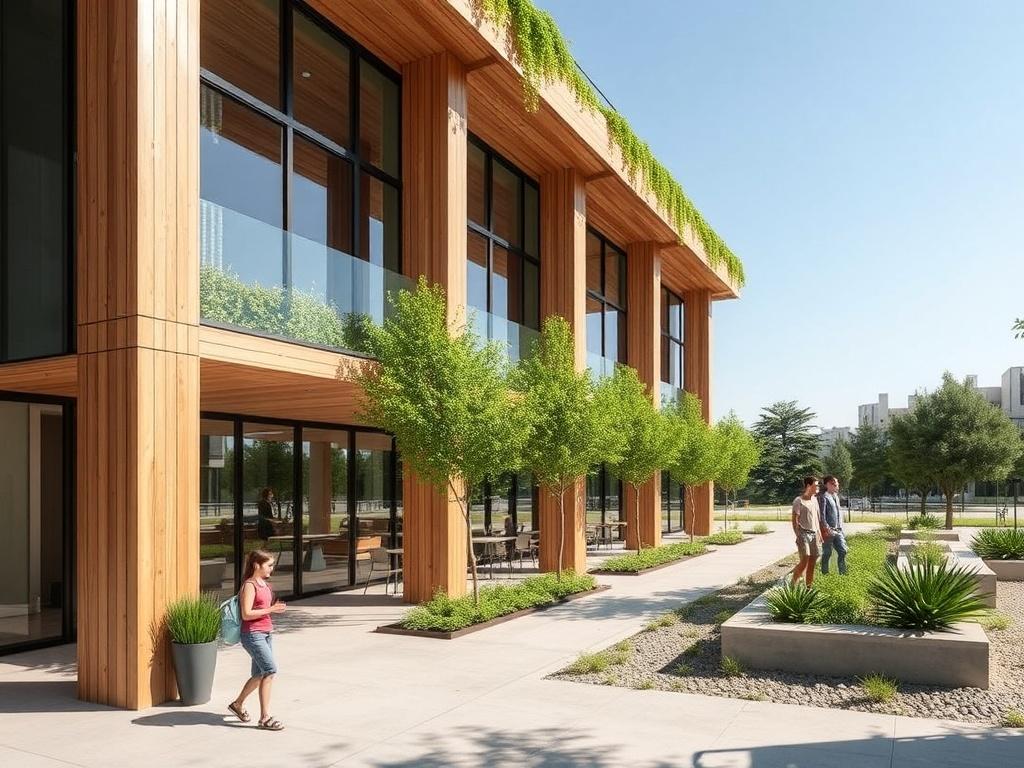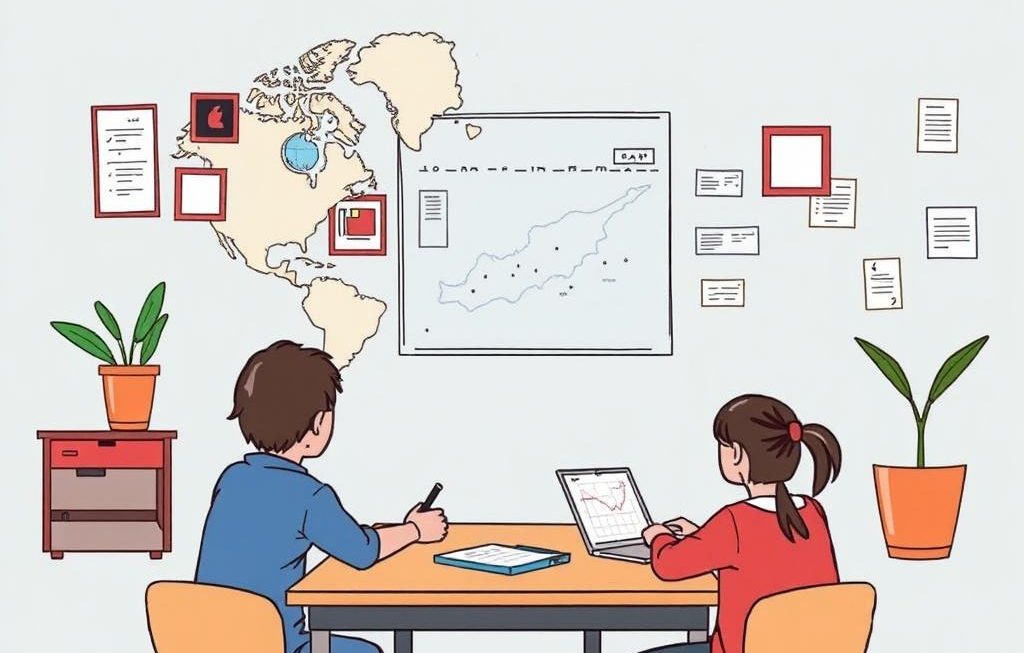Across the Mediterranean island of Cyprus, a quiet yet vital transformation is unfolding in education infrastructure. It’s not just about classrooms anymore; it’s about crafting environments that reflect sustainability, respect nature, and provide healthier spaces for students and staff alike. For families investing in Larnaca real estate for sale, this evolution in green schools Cyprus adds a compelling dimension to community value and lifestyle. These eco friendly schools Cyprus exemplify how sustainability can be embedded into daily learning, merging environmental care with education. But what makes a campus truly sustainable? And how is this concept reshaping Cyprus’s international schools? This article dives into sustainable campus design, explores current initiatives, and highlights the growing importance of environmental education Cyprus is championing.
The Rise of Green Schools in Cyprus
Green schools are more than buildings designed to save on energy—they are hubs that integrate sustainability into the learning environment itself. Cyprus, known for its sunny climate and beautiful landscapes, faces unique challenges and opportunities in this regard. The island’s international schools increasingly adopt green infrastructure to enhance energy efficiency, reduce waste, and promote ecological awareness among students. These efforts respond to Cyprus’s broader energy goals and environmental strategies.
In practice, green schools in Cyprus tend to feature solar panels, water-saving irrigation systems, and energy-efficient heating and cooling. But beyond technology, schools promote outdoor learning and biodiversity on campuses, creating natural habitats that complement curricular goals in environmental education Cyprus is advancing.
The shift towards green schools in Cyprus is reshaping how students experience education, blending eco-awareness with everyday learning.
Green Building Standards and Certifications
International standards like LEED (Leadership in Energy and Environmental Design) and BREEAM (Building Research Establishment Environmental Assessment Method) guide the development of green schools worldwide. Cyprus international schools are beginning to adopt such benchmarks or adapt them to local needs. Using these frameworks ensures that sustainable campus design meets rigorous criteria in energy consumption, material use, and indoor environmental quality.
Some schools also pursue certifications tailored to Mediterranean climates, recognizing the region’s solar potential and unique environmental stressors. These certifications consider factors like natural ventilation tailored to Cyprus’s breezes, shaded outdoor areas, and rainwater harvesting, creating a model that fits the local context.
Key Elements of Sustainable Campus Design
To grasp how sustainability takes shape on campuses, it’s worth exploring the core physical and organizational elements involved in sustainable campus design. The process goes beyond energy-efficient buildings to embrace landscape choices, resource management, and community engagement.
Energy Efficiency and Renewable Energy Integration
The backbone of sustainable campus design is smart energy use. Facilities incorporate photovoltaic solar panels taking advantage of Cyprus’s abundant sunshine to generate electricity. Combined with energy-efficient windows and high-insulation materials, these strategies dramatically cut down reliance on fossil fuels.
Lighting also plays a crucial role—LED fixtures, dimmable controls, and daylight sensors reduce power consumption without compromising visibility. Efficient HVAC systems adapt to classroom occupancy, maintaining comfort while minimizing waste.
Water Conservation and Waste Management
Water scarcity is a pressing concern in Cyprus, making water-saving infrastructure a priority in eco friendly schools Cyprus are building. Recycled greywater systems irrigate gardens, and rainwater harvesting reduces dependence on municipal supplies. Low-flow fixtures and waterless urinals help cut backend consumption.
On the waste front, schools implement recycling programs, compost organic waste from cafeterias, and educate students about waste reduction. These efforts tie directly into environmental education Cyprus promotes, encouraging responsible habits that extend beyond the campus borders.
Landscape and Biodiversity Integration
Green spaces serve multiple functions: they moderate microclimates, provide outdoor learning settings, and support native flora and fauna. Sustainable campuses intersperse shaded areas, vegetable gardens, and butterfly-friendly plants throughout the grounds. This not only beautifies campuses but deepens students’ appreciation for local ecosystems.
Designing open, green areas on school grounds helps nurture students’ connection to nature while cooling the built environment.
Environmental Education in Cyprus: A Core Component
Building green infrastructure is one part of the puzzle; another is embedding environmental education Cyprus-wide to foster sustainable living habits starting early. International schools, known for their progressive approaches, increasingly integrate eco-curricula aligned with global sustainability goals.
These programs often include hands-on projects such as urban gardening, wildlife monitoring, and energy audits of campus facilities. Students learn not just theory but practice, directly seeing how their actions impact the environment. Through these initiatives, schools become living laboratories for sustainability.
Teachers collaborate with local environmental groups to bring in real-world expertise. School events might focus on global climate action, encouraging student participation in community clean-ups or tree-planting projects. This practical emphasis deepens engagement, making environmental challenges tangible and motivating responsible citizenship.
Challenges and Opportunities in Sustainable Campus Development
Moving to green school models in Cyprus is not without its obstacles. Limited budgets and the high initial cost of sustainable technologies can slow adoption, especially for smaller schools or those located off major urban centers. Moreover, integrating sustainability into existing buildings often requires creative retrofitting and incremental upgrades.
Yet opportunities abound. Government incentives and international funding programs encourage schools to invest in green infrastructure. Growing demand from parents and community groups for healthier, eco-friendly educational environments boosts support. Additionally, schools that successfully implement these measures often see reductions in operational costs over time, especially in energy and water expenses.
Case Studies: Leading Sustainable Schools in Cyprus
Some Cyprus international schools stand out for their leadership in sustainability. One school in Nicosia has installed a state-of-the-art solar array combined with a comprehensive recycling scheme, reducing its carbon footprint by nearly half within a few years. Another in Limassol has transformed its grounds into an ecological showcase, featuring native plants, rain gardens, and student-designed composting systems.
These cases demonstrate that commitment to sustainable campus design can be both feasible and effective. Their successes inspire other institutions island-wide to pursue similar paths, creating a ripple effect for green education across Cyprus.
Examples of thriving green schools in Cyprus reveal practical ways to overcome challenges through innovation and community collaboration.
Future Trends: The Road Ahead for Cyprus’s Eco Friendly Schools
Looking forward, technology and pedagogy both advance the cause of green schools Cyprus embraces. Smart building management systems increasingly automate energy and water savings, adapting in real time to needs and environmental conditions. Virtual and augmented reality tools enrich environmental education, providing immersive experiences that make sustainability lessons unforgettable.
At the policy level, Cyprus continues to align its educational infrastructure plans with EU sustainability directives, emphasizing renewable energy targets and carbon neutrality by mid-century. This political will supports further investments in green schools and sustainable campus design.
Moreover, the blending of sustainability with digital innovation charts new educational possibilities. Connected campuses enable students to monitor their environmental impact continuously, fostering a culture of accountability that extends beyond the classroom.
Integrating Community Values and Cultural Context
Sustainability initiatives succeed when rooted in local context. Cyprus’s rich cultural heritage provides unique opportunities to weave traditional knowledge about land stewardship and water conservation into modern green campus models. Schools can use this blend to honor heritage while preparing students for global environmental challenges.
Engaging parents and local residents in sustainability projects further strengthens community bonds and broadens the impact of school-based initiatives.
| Feature | Description | Benefit |
|---|---|---|
| Solar Energy Systems | Photovoltaic panels installed on rooftops or grounds | Reduces reliance on grid electricity, lowers carbon footprint |
| Water Saving Technologies | Rainwater harvesting, greywater recycling, low-flow fixtures | Conserves water resources, decreases utility costs |
| Natural Ventilation | Building orientation and design promoting airflow | Improves indoor air quality, reduces cooling energy needs |
| Outdoor Learning Spaces | Gardens, shaded seating, biodiversity zones | Encourages hands-on environmental education and wellness |
| Waste Reduction Programs | Recycling centers, composting of organic waste | Minimizes landfill contributions, fosters eco-consciousness |
Crafting Tomorrow’s Leaders Through Greener Campuses
The journey toward widespread sustainable campus design in Cyprus international schools is underway, but it is far from a finished story. The commitment to creating eco friendly schools Cyprus reflects a deeper recognition—that education must prepare students to navigate and remedy a complex environmental future. By embedding sustainability physically in buildings and conceptually in curricula, these schools cultivate a generation attuned to ecology, innovation, and resilience.
For families considering a move or investment in Cyprus, the appeal of green schools complements the island’s growing reputation as a destination for responsible living. Properties near such schools benefit from their progressive ethos, becoming more attractive and valuable.
Ultimately, sustainable campuses are microcosms of a broader societal shift toward green living, demonstrating what’s possible when educators, architects, communities, and youngsters unite with a shared purpose. Environmental education Cyprus fosters through these spaces extends far beyond textbooks, inspiring real-world action and hope.
Green campuses in Cyprus are not just about buildings—they are the foundation for building sustainable futures, one student at a time.
Practical Questions About Green Schools and Sustainable Campus Design in Cyprus
- What are the main benefits of green schools in Cyprus?
Green schools reduce environmental impact through energy and water savings, create healthier learning environments, and enrich environmental education. - How does sustainable campus design affect energy costs?
By integrating solar power and energy-efficient systems, operational energy costs drop significantly over time. - Are green school features costly to implement initially?
Initial costs can be higher, but savings from reduced utilities and government incentives often offset these over several years. - How is environmental education implemented in Cyprus’s international schools?
Through project-based learning, outdoor activities, and partnerships with environmental organizations focused on practical sustainability experiences. - Can existing schools retrofit for sustainability?
Yes, many schools upgrade lighting, install solar panels, and improve water systems gradually to adopt green features. - What role do parents and communities play?
They help support sustainability initiatives, participate in projects, and reinforce eco-friendly habits at home and school. - How do green schools in Cyprus contribute to national environmental goals?
They reduce carbon emissions, promote renewable energy, and foster a culture of ecological awareness aligned with Cyprus’s sustainability targets.



